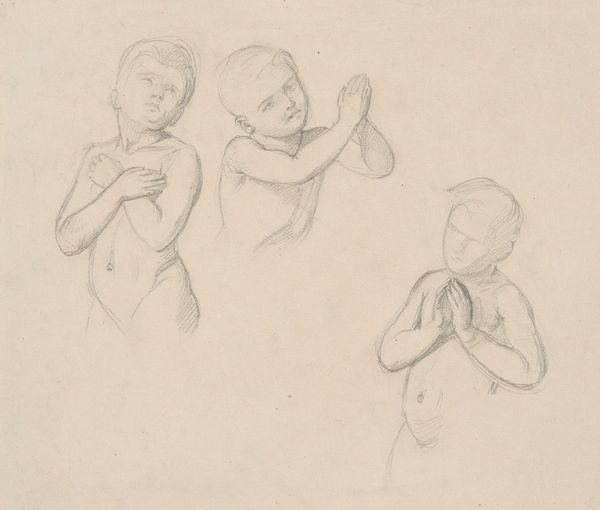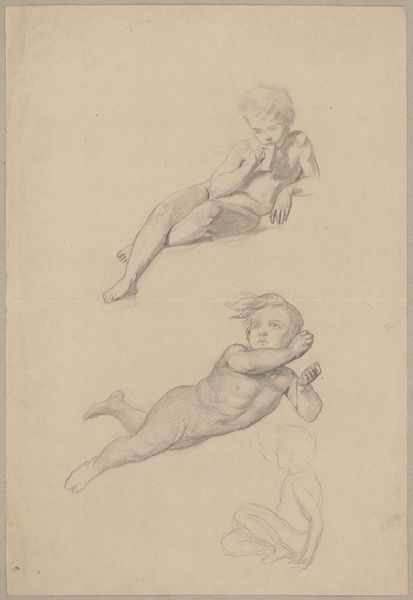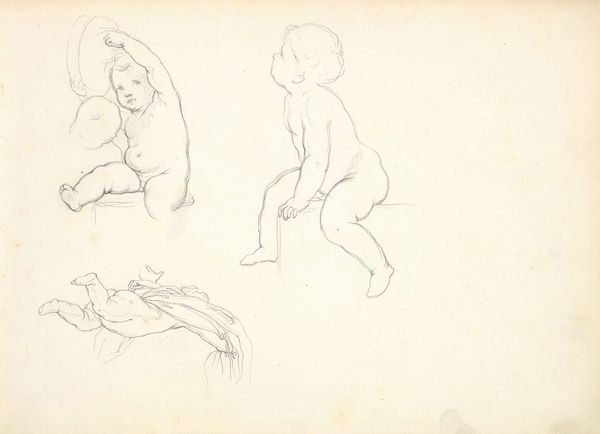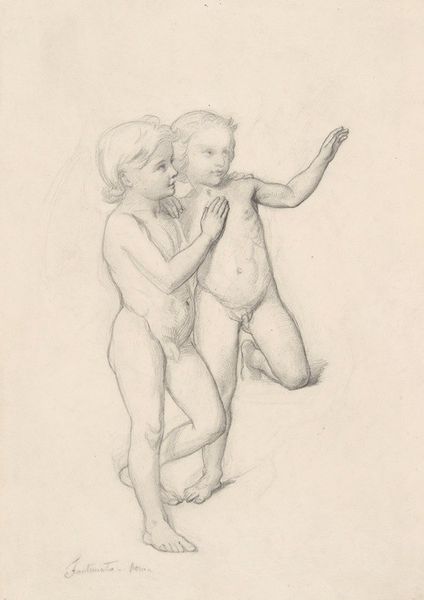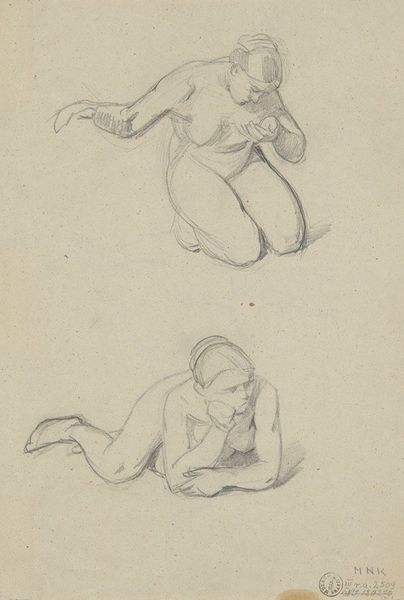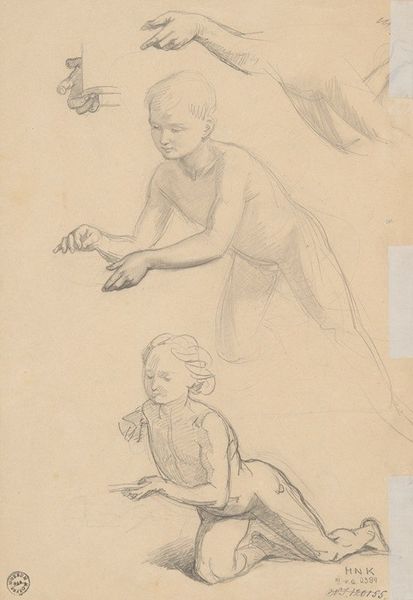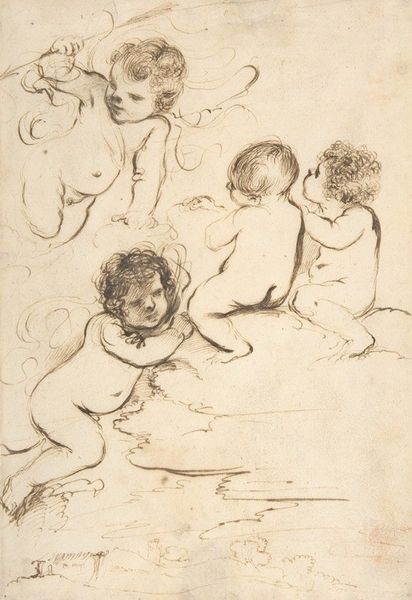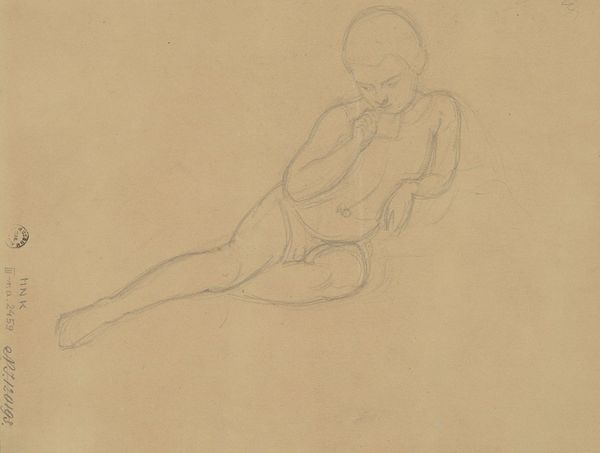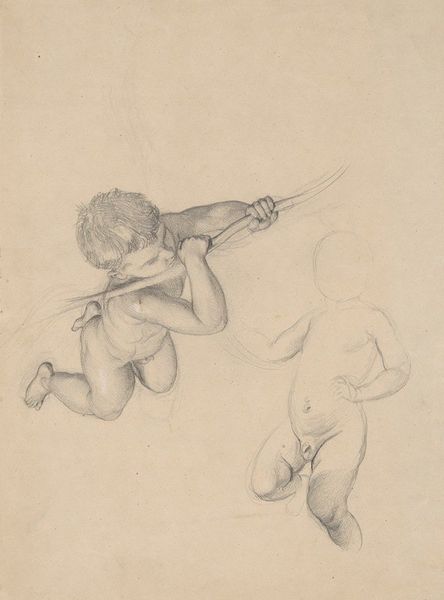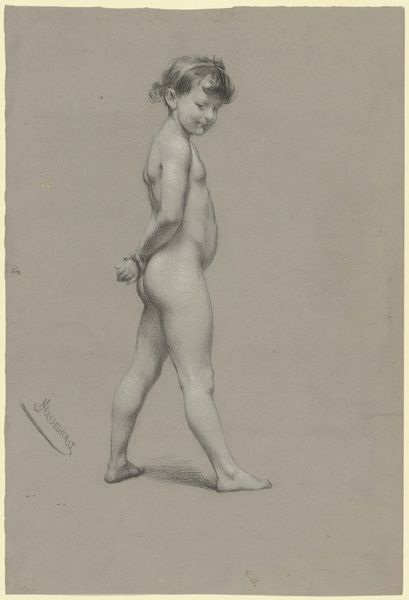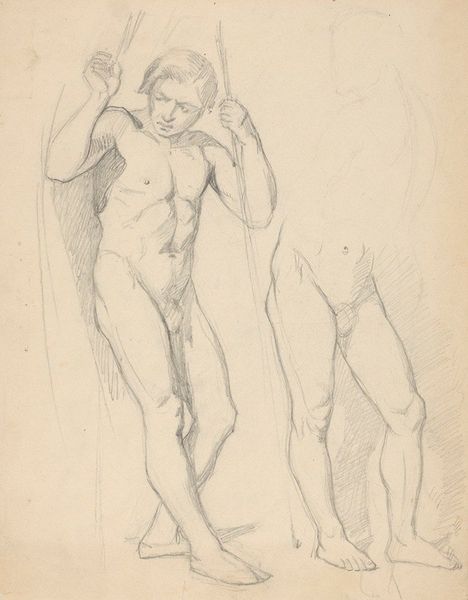
drawing, pencil
#
pencil drawn
#
drawing
#
pencil sketch
#
pencil drawing
#
pencil
#
portrait drawing
#
academic-art
Copyright: Public Domain: Artvee
Curator: Let’s turn our attention to a study by Józef Simmler, from 1864, titled 'Sketches of Angels for the painting "The Immaculate Conception".' It’s rendered in pencil. Editor: My first impression is one of incredible tenderness. The softness of the pencil work really captures the innocence and vulnerability of these youthful figures. You can almost feel the fragility of the paper beneath. Curator: Indeed. These aren't just studies of figures, they're studies of ideas about innocence and divinity made manifest through childhood. The cherubic faces, the unclothed forms—it all contributes to an archetypal image of angels as pure, uncorrupted beings. We see artistic depictions of innocence here that resonate culturally and psychologically. Editor: Right. And consider the act of sketching itself – a direct, unmediated connection between the artist's hand and the paper. You can see the artist working through the composition, testing different poses. This is labor, you can really feel the hand of the artist at work in this piece. Curator: And this work sits within a long history. Think of Renaissance masters using studies to work through complex theological ideas, using line to portray ideal forms. There is a spiritual intention, aiming to provoke contemplation through the visual language of angels as messengers between heaven and earth. Editor: It makes me think about the economy of art materials. Simmler chooses pencil – an accessible, relatively inexpensive medium for these explorations. The use of humble material lends a degree of humility to this theological project. He is representing heavenly beings but relying on earthly and accessible supplies. Curator: Ultimately, this work asks us to consider how our understanding of the divine has been shaped by artists who return again and again to specific, familiar images of youthful, androgynous figures. Editor: Yes, this image of angels also suggests a particular context of artistic training and craft in the nineteenth century – and what materials, labor, and the artist were considered. Curator: Absolutely. These sketches speak volumes, both about Simmler's creative process and the enduring power of symbolic imagery. Editor: I'll definitely look at Simmler's process differently now. It is also incredible that the image remains both very temporal, linked with material culture, and timeless.
Comments
No comments
Be the first to comment and join the conversation on the ultimate creative platform.

